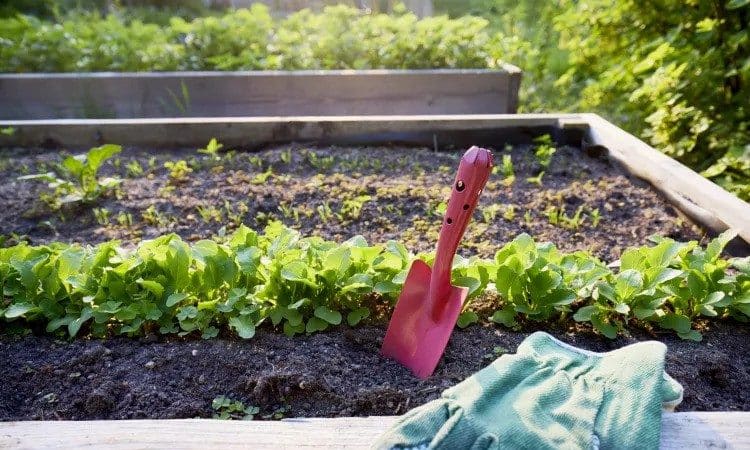
For many home gardeners, raised garden beds are a wonderful solution to their yard woes. Raised beds can help you incorporate the exact right soil for your picky plants or extend the amount of garden space you have. But not every plant will thrive in a raised bed.
Some plants need more room for their roots to spread out. This is the case with many fruit trees and even plants like pumpkins or asparagus because of their sprawling vines or complex root systems. To find out exactly which plants shouldn’t go into a raised bed, we talked to horticulturalists and arborists to gather more information. Here are the plants you should never grow in a raised bed.
1. Squash
Most squash varieties need rich, fertile soil, and with a raised bed, you can certainly control the soil quality for this plant. However, according to landscape architect and horticulturist Michael Clarke, squash gets too large and takes up too much space in a raised bed. If left in a raised bed, the squash will crowd out other plants.
2. Melons
Most melon varieties need plenty of warmth and sunshine. While a raised bed might be able to provide these things, melons do best in the ground. “Melons spread horizontally and are too heavy to grow on a support system,” says Clarke. “Therefore, they do much better when planted in the ground.”
3. Corn
Corn and grains need room to grow and require long rows to really prosper. This is because many varieties of corn are wind-pollinated, so the shorter the space between corn stalks, the more success they will have during pollination. “Corn does better planted in rows in the ground to achieve proper pollination,” says Clarke.
4. Blackberries
These plants like to spread out and are likely to compete with other plants in a raised bed. “They also need a more acidic soil than vegetables and are perennials that will grow year-round, so they’re best planted in the ground,” says Clarke.
5. Mint
As a fast and aggressive grower, mint can dominate a space quite easily. “Mint will spread out both above ground and underground through runners, pushing out younger, developing plants,” says Clarke. Generally, mint should be planted in its own container.
6. Apple Trees
A dwarf apple tree might seem like a charming focal point for a raised bed, but even small varieties will outgrow the area. “Apple trees require extensive root systems that can spread up to two to three times the width of the canopy,” says Ben McInerney, a certified arborist. “Apple trees need deep soil for nutrient uptake and anchoring, often extending 3 to 4 feet deep.” A raised bed will restrict the tree’s root system and result in stunted growth and poor apple production.
7. Asparagus
A perennial vegetable, asparagus develops a complex root system. “It can reach depths of 10 to 15 feet over its 15 to 20-year lifespan,” says McInerney. Most raised beds can’t provide sufficient depth for optimal growth. “Asparagus planted in shallow beds often results in thin, weak spears and reduced yield,” he says.
8. Pumpkins
This plant likes to take up a lot of room. “Pumpkin vines can spread 20 to 30 feet in all directions,” says McInerney. If they don’t have enough space, they have a habit of finding it, reaching out to other nearby plants and structures to climb. “The large fruit size—some varieties produce pumpkins weighing 100 pounds—can also cause structural issues for raised beds.”
9. Rhubarb
Another perennial with a long lifespan, rhubarb develops an extensive root system. “It needs this space to store energy in its large roots over winter,” says McInerney. But in raised beds, rhubarb often produces thin, weak stalks due to restricted root growth, he adds.
10. Horseradish
This plant has a notoriously invasive root system. “Once established in a raised bed, it’s nearly impossible to remove without dismantling the entire structure,” says McInerney. Horseradish roots can penetrate even the smallest cracks, potentially damaging the bed itself. “I’ve had several clients who’ve had to completely rebuild their raised beds to eradicate horseradish that had taken over and started escaping into surrounding areas,” he says.
While raised beds offer numerous advantages, not every plant will thrive in this environment. By avoiding these ten plants, you can ensure your raised bed garden remains healthy and productive.

